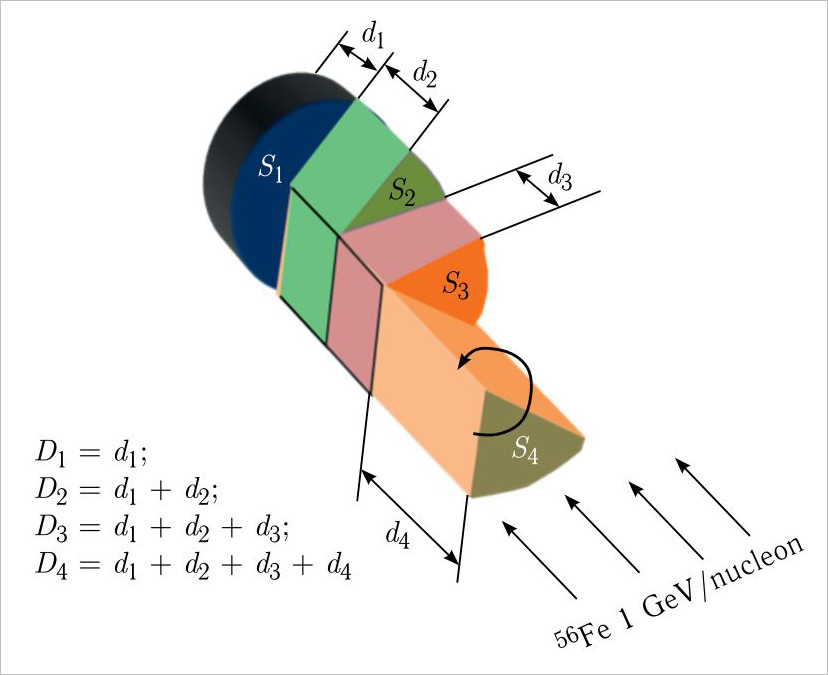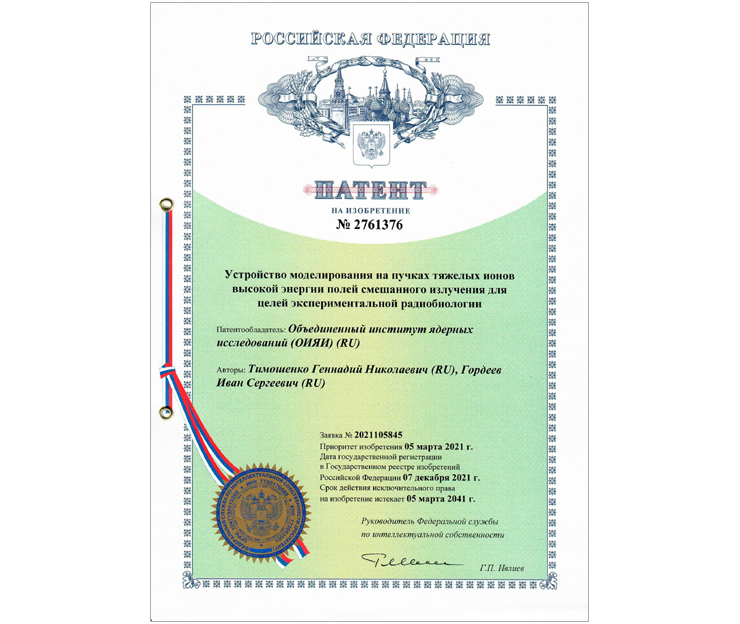Patent for device aimed to simulate radiation field
Media, 12 January 2022
At the end of December 2021, the Joint Institute for Nuclear Research received a patent for the device used for modelling mixed radiation fields at high-energy heavy-ion beams for the purposes of experimental radiobiology. Employees of the Laboratory of Radiation Biology JINR Gennady Nikolaevich Timoshenko and Ivan Sergeevich Gordeev proposed the invention. In fact, the invention implies the creation of a simulator of the mixed radiation field inside a spacecraft in earth conditions. Particles of galactic space radiation (GSR) form this field during flights in deep space.
Creation of such a field to irradiate biological samples is the most topical task of space radiobiology. This is due to the fact that until now, studies of radiation effects of the GSR used to be conducted at accelerators with only particular monoenergetic particles, while the radiation field inside the spacecraft is multicomponent. It includes neutrons, gamma-quanta, and charged particles up to very heavy nuclei. Moreover, this radiation field has a remarkably large energetic spectrum.
According to the authors of the invention, a wide beam of all the components of the inner radiation field with an energy of up to 1 GeV/n (heavy nuclei with a charge of up to 27) is formed behind the proposed simulator. A beam of 56Fe nuclei with an energy of 1 GeV/n and a set of various targets is used for it. This is quite enough to reproduce all the main radiation-induced effects of crew irradiation in space. Multi-charged nuclei as part of the field are fragments of the iron core formed at polyethylene targets of various thicknesses. 4 converters (two of which rotate) unite all the targets. The converters are alternately placed in a position where they are irradiated with a 56Fe nuclei beam. The rotation of the converters around the axis of the beam is necessary to provide fragments from each target with homogeneous fields created behind the simulator. The contribution of each fragment to the general field is determined by the ratio of the sector of the corresponding target to the area of the circle (Fig. 1).
 Fig. 1. Schematic construction of rotating converter with 4 targets for producing iron nuclei fragments behind simulator as parts of secondary mixed radiation. Wide 56Fe beam with energy of 1 GeV/n drops on simulator
Fig. 1. Schematic construction of rotating converter with 4 targets for producing iron nuclei fragments behind simulator as parts of secondary mixed radiation. Wide 56Fe beam with energy of 1 GeV/n drops on simulator
The obtained radiation field recreates well earlier calculated characteristics of the internal field behind the protection (shell) of the spacecraft with a thickness of 15 g/cm2. Calculations were verified using spectra of linear energy transfers measured by the RAD and LUILIN detectors onboard the HACA MSL and EKA ExoMars (TGO) automated Mars missions.
In the framework of the innovative applied research programme at the NICA accelerator complex, two specialised channels with the output of accelerated heavy ions are currently being created in VBLHEP JINR. One is to study the radiation resistance of electronic components (the SODIT installation) and the other for conducting experiments in the fields of space radiobiology (the SODIB installation). The unique simulator of the internal radiation field is planned to be included in the SODIB installation on a beam of iron nuclei at the radiobiological channel of the Nuclotron of the NICA complex.
